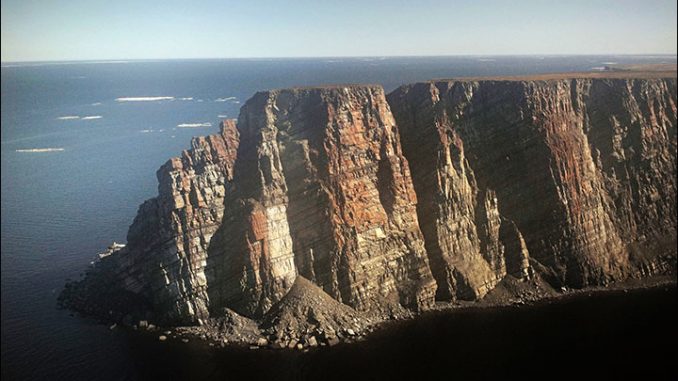
At time time, Stolbovoy would have been connected to the mainland, and the site now being examined was on commanding 150 metre sheer cliffs. Picture: Ilya Kravchenko
By The Siberian Times
Most northerly palaeolithic site found on Arctic island of Stolbovoy, part of lost continental link between Siberia and Alaska, believe scientists.
Excavations are to be made after the discovery of evidence indicating the world’s most northerly Palaeolithic site on this remote island off the Arctic coast of Yakutia, also known as the Sakha Republic.
An expedition to Stolbovoy in the eastern Laptev Sea, some 184 km from the mainland, found implements believed to belong to ancient humans at the time when there was a land bridge between modern Siberia and North America, known as Beringia.
The implements at new Palaeolena site are consistent with being up to 300,000 years old but further research must be conducted, say experts.
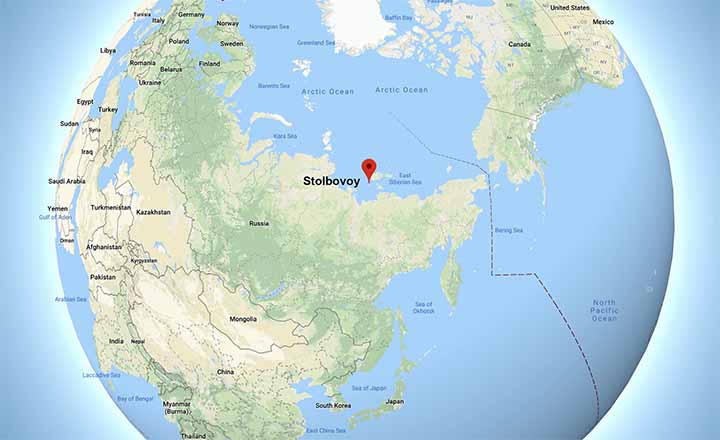
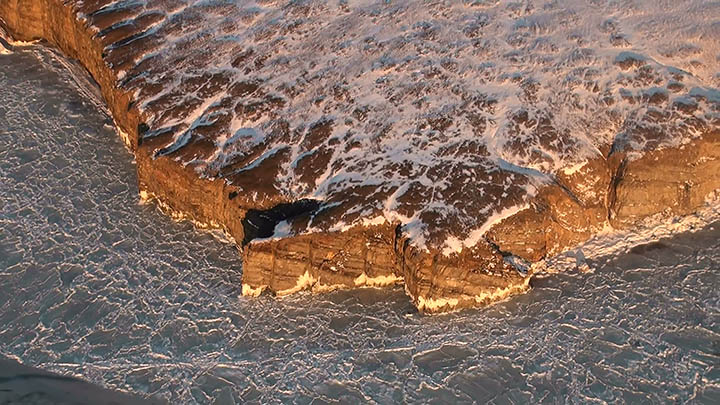
The new site lies some 877 km north of the Arctic Circle, some 1,776 km south of the North Pole.
It was across the land bridge that the American continent was first settled, it is now believed.
Until now, the most northerly known human settlement in Palaeolithic times – Yana Site – has been 370 km to the south, dating back some 32,500 years, according to archeologists.
At time time, Stolbovoy would have been connected to the mainland, and the site now being examined was on commanding 150 metre sheer cliffs – ‘majestic and breathtaking’ – above deep water close to the estuary of the giant Paleo-Lena river.
The new site lies some 877 km north of the Arctic Circle, some 1,776 km south of the North Pole.
Flooding began to submerge Beringia some 15,000 years ago.
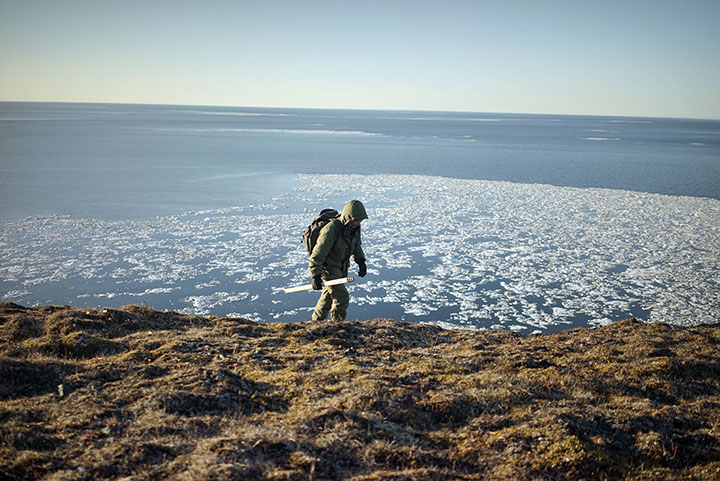
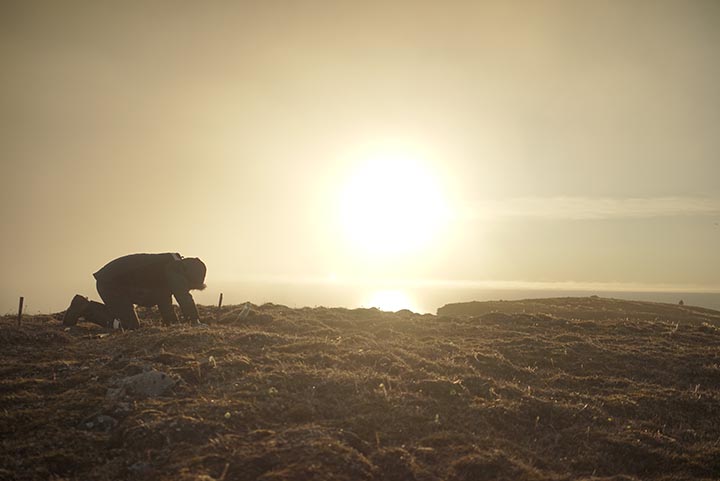
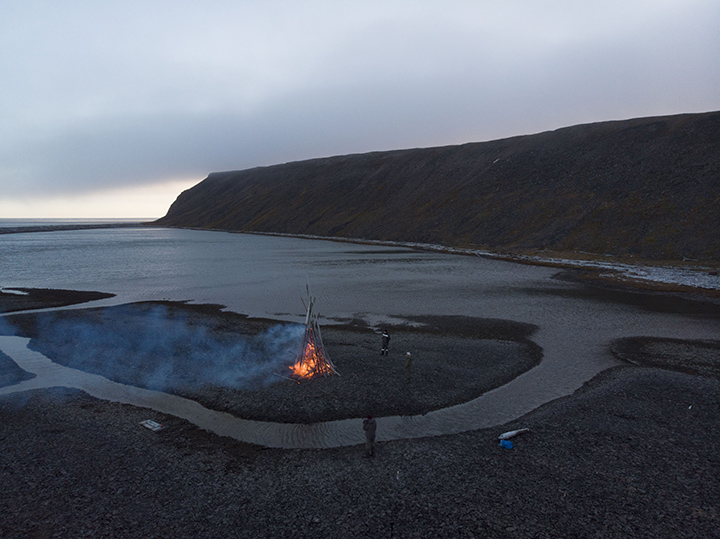
‘The idea to check Stolbovoy came two years ago, when we made the map of the surface of the Laptev part of Beringia.’ Pictures: Ilya Kravchenko
As it did so, Stolbovoy became disconnected from modern mainland Russia.
Researcher Tomas Simokaitis told The Siberian Times: ‘We suppose the site is Palaeolithic.
‘We suppose these implements we have found are hundreds of thousands years old, but so far we have no iron proof.’
A range of tests will be conducted on the finds, he said.
‘If, with time, we prove that it is Palaeolithic, this will be the first clear evidence of humans on the Beringia land.’
Furthermore, if confirmed, this will be ‘the world’s northernmost site, where ancient people stayed, currently known by science’.
He sees it as potentially a ‘world scale discovery in that this site gives the first tangible confirmation of human presence on the territory of legendary Beringia’.
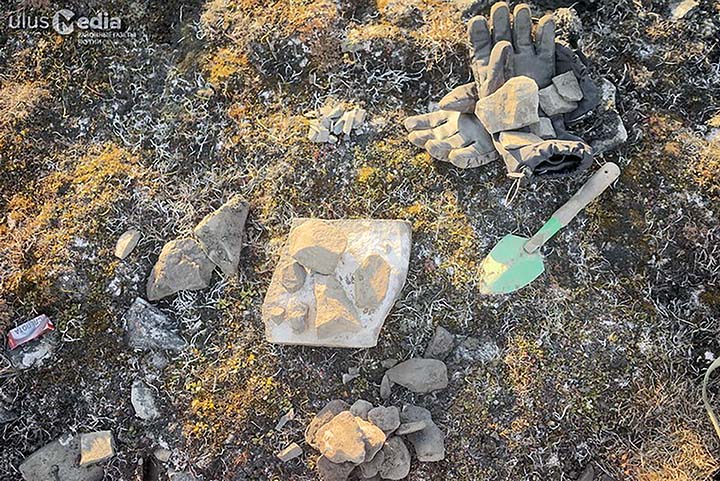
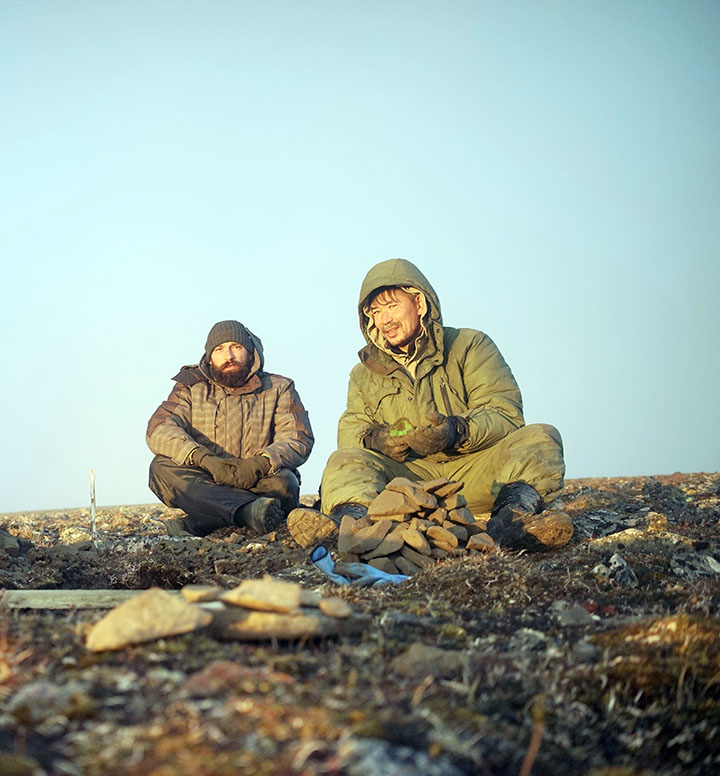
‘We suppose these implements we have found are hundreds of thousands years old, but so far we have no iron proof.’ Pictures: Ulus Media, Ilya Kravchenko
He announced: ‘We do plan the further research.
‘If not this year, then definitely the next year, we will gather samples.
‘We will try to dig into the permafrost, and open the surface.
‘For now we have just collected material from the surface.’
Simokaitis is from the Institute for Humanities Research and Indigenous Studies of the North (IHRISN), Siberian Branch of RAS, Yakutsk.
The expedition to the New Siberian archipelago was organised by Yakutia Academy of Sciences, and the Yakutia branch of the Russian Geographical Society.
He said: ‘The idea to check Stolbovoy came two years ago, when we made the map of the surface of the Laptev part of Beringia – the surface of the part of the Laptev Sea which turned to the shore in ancient times.
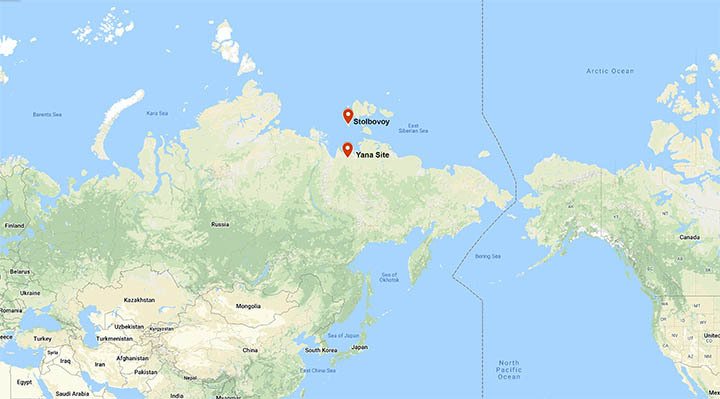
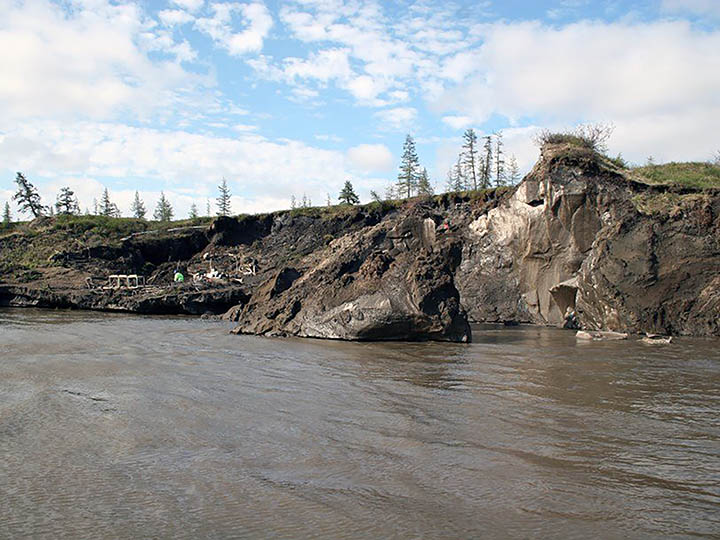
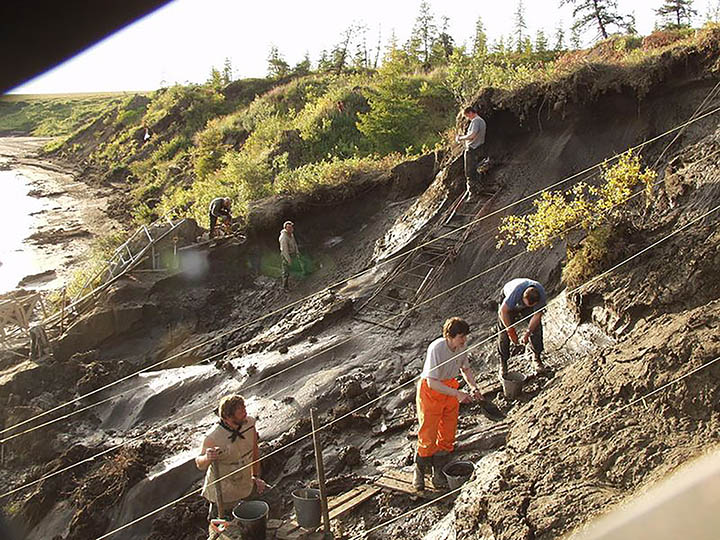
Until now, the most northerly known human settlement in Palaeolithic times – Yana Site – has been 370 km to the south, dating back some 32,500 years, according to archeologists. Pictures: The Siberian Times, Institute of the History of Material Culture
‘We noticed that big depths are around Stolbovoy, the fault is up to 44 metres deep.
‘That means that was obviously a river channel.
‘And we imagined how it looked like in Palaeolithic times – 150 metre sheer cliffs, so majestic and breathtaking.
‘And besides, only one source of stone.
‘So I suggested there must be something here.’
‘We imagined how it looked like in Palaeolithic times – 150 metre sheer cliffs, so majestic and breathtaking.’ Pictures: Ilya Kravchenko
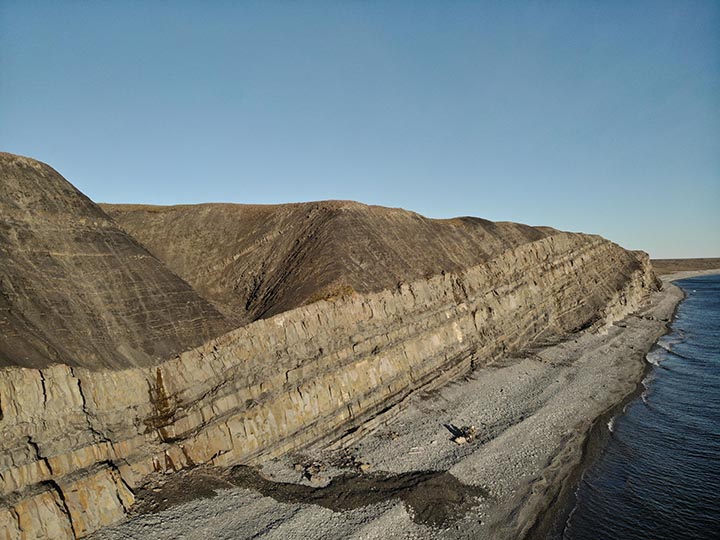
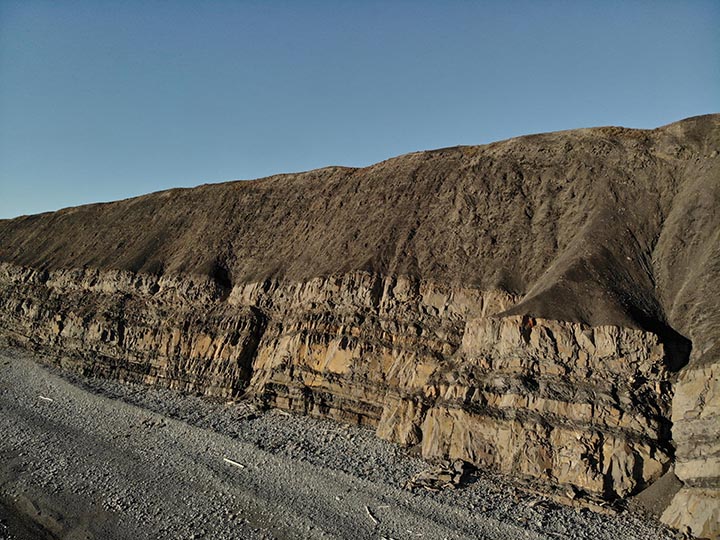
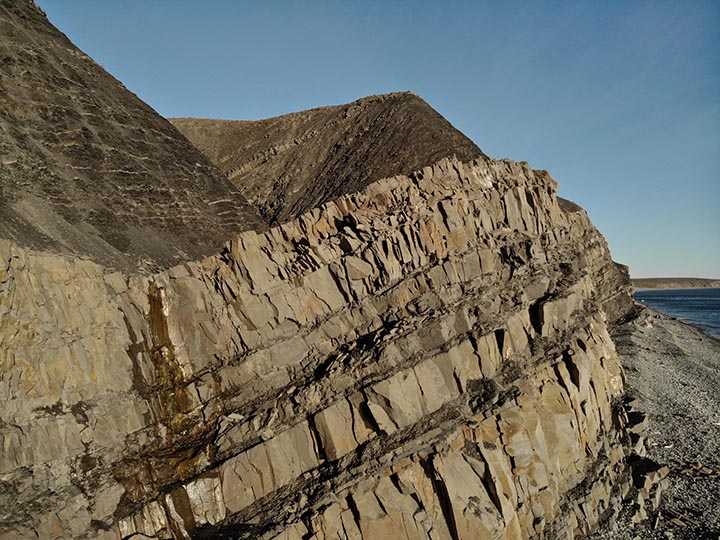
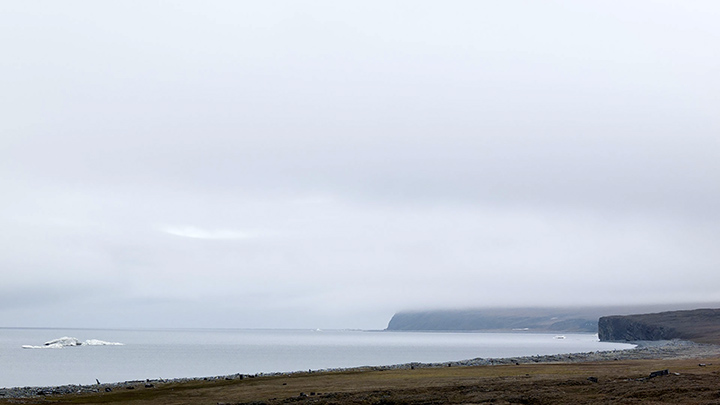
Ref.: http://siberiantimes.com/science/casestudy/news/suspected-first-trace-of-beringia-people-on-the-land-bridge-now-mostly-sunken-joining-russia-and-north-america/
…
50,000 year old Siberian bones may be the ‘oldest Homo sapiens’ outside Africa and Middle East
Finds of ‘lion-hunting ancient man’ excavated from site of new road new Lake Baikal now undergoing tests at Germany’s Max Planck Institute.
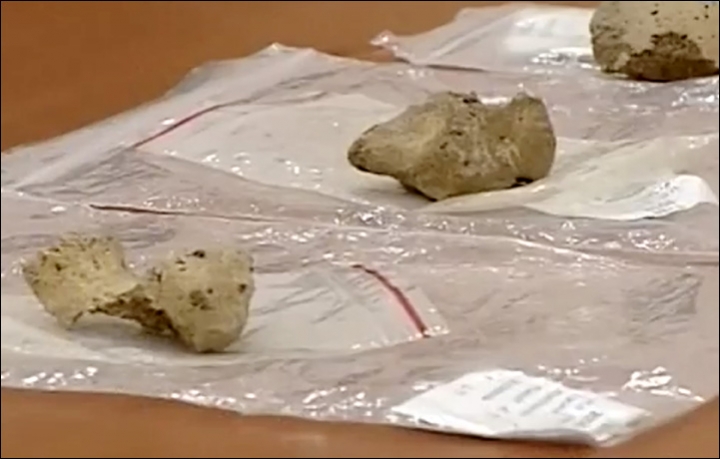
The older set of bones found on Tuyana site dated to 50,000 years ago. Picture: Vesti.Irkutsk
If the discovery in Buryatia is verified as being Homo sapiens, it will alter scientific thinking about the arrival of man in Siberia.
The discovery was made in the Tunkinskaya Valley by Irkutsk scientists in 2016.
Older bones date to 50,000 years ago, younger ones at the same site to around 30,000 years ago, and they were found alongside tools and animal bones indicating these ancients were proficient hunters of cave lions, bison, horses and deer.
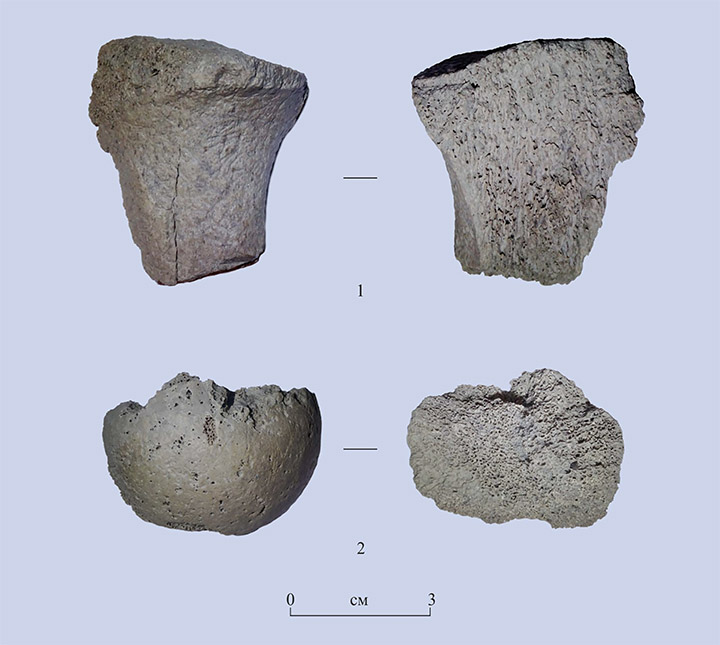
Two fragment of bones found on Area 2 of Tuyana site. Picture: Evgeniy Rogovskoi
Dr Evgeniy Rogovskoi, senior researcher Institute of Archeology and Ethnography, Siberian branch of the Russian Academy of Sciences, said: ‘The bones were found in 2016 during rescue archeological works near the Buryatian village of Tunka.
‘Work on constructing a new road was about to start, so archeologists rushed here to see if they could take any material from the site.
‘The bones were found within half a metre of the surface.
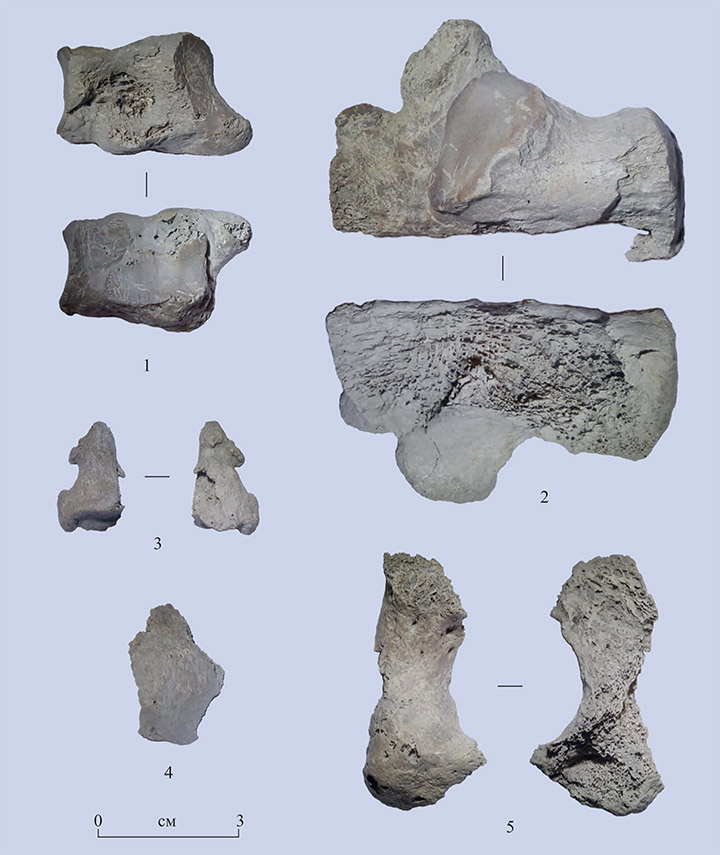
Set of bones found on Area 1 and dated to 30,000 years old. Picture: Evgeniy Rogovskoi
‘We have introduced them to the scientific community only now, two years after the find, because we have been waiting for test results on them.
‘There were two set of bones, one was dated as 27,000 to 30,000 years old, the other as 50,000 years old.’
The younger bones are ‘modern-type’ humans.

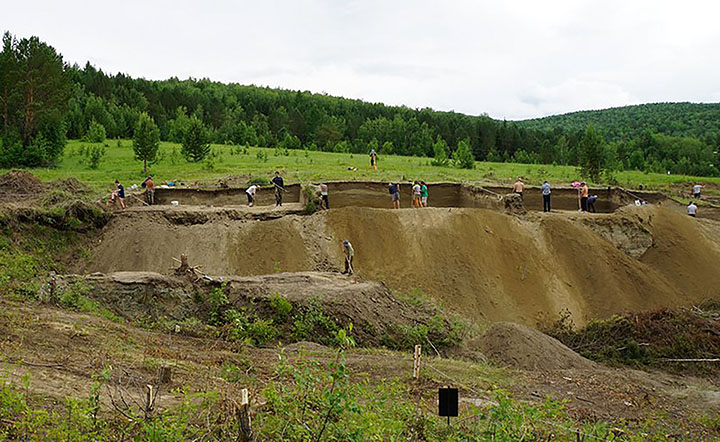
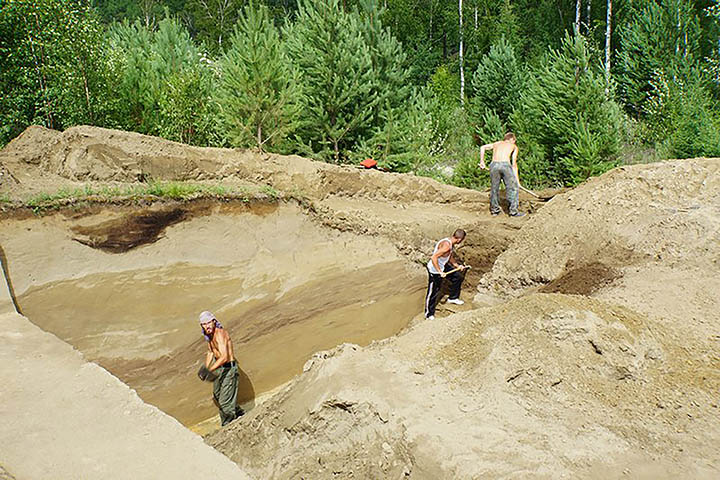
‘Work on constructing a new road was about to start, so archeologists rushed here to see if they could take any material from the site. Pictures: Evgeniy Rogovskoi
But the older ones are now undergoing tests to establish whether they are Homo sapiens, or Neanderthal or another pre-human group.
Researchers say that if they are prehistoric Home sapiens remains, these will be the oldest found in northern Eurasia.
‘More ancient bones were found (here), but these were not Homo sapiens,’ said Dr Rogovskoi.
A large arsenal of bone knives was found at the site, indicating the owners must have been good hunters.
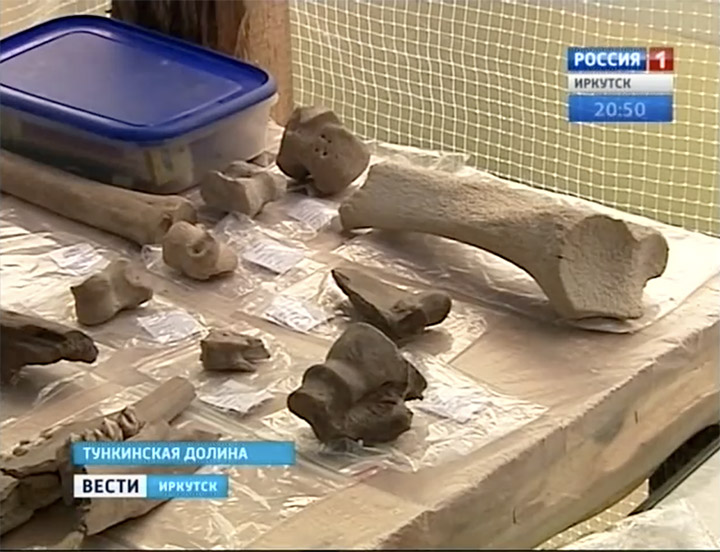
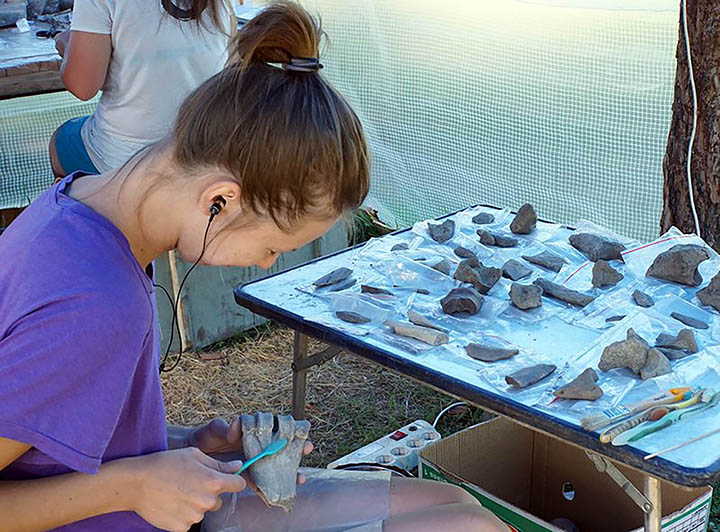
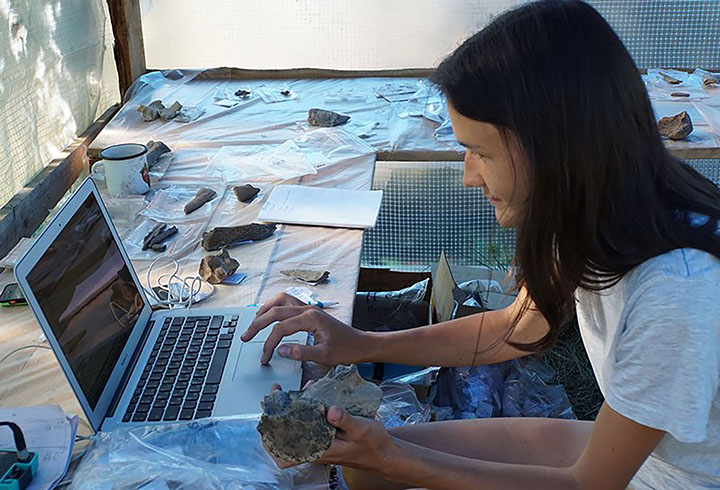
Excavations at Tuyana archaeological site. Pictures: Vesti.Irkutsk, Evgeniy Rogovskoi
Sharp tools found at the site used semi-precious topaz and rock crystal.
An amulet was made of a cave lion tooth.
Dr Mikhail Shunkov, the institute’s director, said: ‘It is hard to overestimate the importance of the find.
‘During the last several decades, the way experts see development of human evolution in southern Siberia has been changing quite drastically.
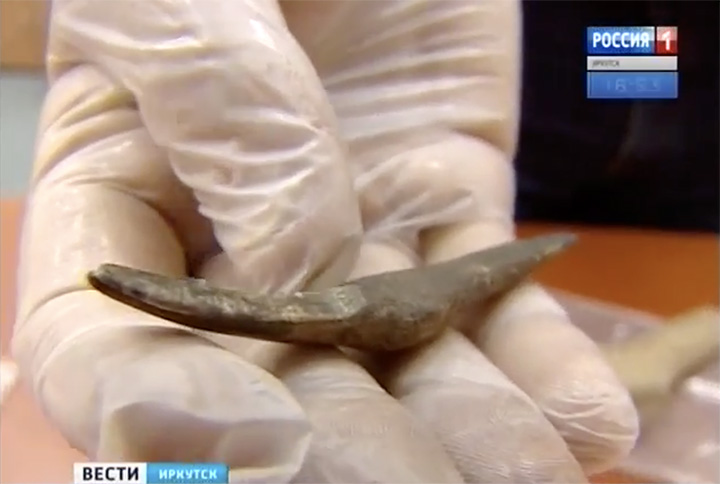
An amulet made of a cave lion tooth. Picture: Vesti.Irkutsk
‘The most important question now is when Homo Sapiens appeared in Siberia, and the Tunka valley finds will allow scientists to shed light on it.’
Older Home Sapiens remains have been found in Morocco, dating back 300,000 years, it was announced last year.
And in a cave in Israel, a jawbone is believed to be of Homo sapiens origin. It has been dated to almost 200,000 years old, twice the age of any previous discovery outside Africa where are species are believed to have originated.


